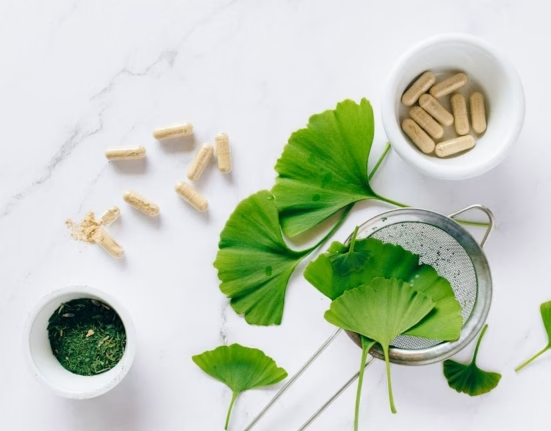The best air-purifying houseplants do more than add a pop of green—they naturally filter toxins, and create a calmer living space. Many common household items, like furniture, paints, and cleaning products, can release chemicals such as formaldehyde, benzene, and ammonia into the air. These pollutants can contribute to allergies, headaches, and even lower your overall well-being.
By choosing the best air-purifying houseplants, you bring home living filters that absorb harmful substances and release fresh oxygen, helping you breathe easier. These plants can also reduce stress and promote a sense of calm, making your home or office feel more inviting. Plus, the simple act of tending to houseplants can boost your mood and add a sense of relaxation to your daily routine. With so many beautiful options to choose from, it’s easy to find the best air-purifying houseplants to suit your style while improving your indoor air quality.
More: Healing through nature: How the environment restores our well-being


Top 8 best air-purifying houseplants
Here are the best air-purifying houseplants that are easy to care for and proven to detoxify your space:
1. Snake Plant (Sansevieria)
Also known as “Mother-in-Law’s Tongue,” the snake plant is one of the most resilient and low-maintenance houseplants you can own. It thrives in a wide range of lighting conditions—from bright, indirect light to low light corners—making it ideal for almost any room in the home. One of its standout features is its ability to convert CO₂ into oxygen at night, unlike most plants that do so only during the day. This makes it especially beneficial in bedrooms, where it can help improve air quality while you sleep.
2. Pothos (Epipremnum aureum)
Pothos, often called Devil’s Ivy, is famous for its attractive trailing vines and glossy, heart-shaped leaves. It’s an incredibly popular choice for beginners because it’s nearly indestructible and adapts well to a wide range of lighting conditions—from low-light corners to bright, indirect sunlight. This versatility makes pothos perfect for almost any room in your home or office.
Beyond its beauty and ease of care, pothos is also known for its air-purifying abilities. It helps remove common indoor toxins such as formaldehyde, benzene, and carbon monoxide, contributing to a healthier living environment. It’s fast growth means it can quickly fill empty spaces with lush greenery, brightening up your surroundings while cleaning the air. Caring for pothos is straightforward: it prefers to dry out a bit between waterings, so be careful not to overwater, as this can cause root rot.
More: Discovering the enchantment of Na Pali coast
3. Peace Lily (Spathiphyllum)
Peace lilies are among the most effective houseplants for improving indoor air quality. They are known to remove a variety of harmful chemicals from the air, including formaldehyde, benzene, trichloroethylene, xylene, and ammonia. In addition to their air-purifying qualities, peace lilies also help reduce mold spores, making them particularly beneficial in areas with higher humidity, such as bathrooms.
Peace lilies thrive in bright, indirect light but can also tolerate low light conditions. However, they may not bloom as profusely in low light. Keep the soil consistently moist but not waterlogged. Water the plant when the top inch of soil feels dry to the touch. Overwatering can lead to root rot, so ensure proper drainage.
Note: While peace lilies are beneficial for air purification, they are mildly toxic to pets if ingested. Keep them out of reach of animals to prevent any health issues.
4. Spider Plant (Chlorophytum comosum)
Spider plants are popular for their easy care and impressive air-purifying abilities. They are non-toxic to pets and humans, making them a safe choice for any household. These resilient plants thrive in a variety of indoor conditions, including low light and irregular watering, which makes them ideal for beginners.
One of their key benefits is their ability to remove harmful pollutants such as carbon monoxide and xylene from indoor air, helping to create a cleaner and healthier environment. Spider plants produce long, arching leaves with small offshoots or “spiderettes” that can be propagated easily, allowing you to grow new plants effortlessly.
They prefer bright, indirect light but can tolerate lower light levels. Regular watering is important, but the soil should be allowed to dry out slightly between waterings to prevent root rot. Spider plants also enjoy occasional misting to maintain humidity, especially in dry indoor environments.
More: Colorado’s Blue Lakes: Journey through alpine paradise
5. Rubber Plant (Ficus elastica)
The Rubber Plant, scientifically known as Ficus elastica, is one of the best air-purifying houseplants for modern homes. This tropical evergreen is renowned for its broad, glossy, dark green leaves, which not only make a dramatic visual statement but also act as efficient air filters. Ficus elastica is particularly effective at removing common indoor pollutants, such as formaldehyde. The plant’s large leaf surface area allows it to absorb toxins while releasing oxygen back into the air, supporting better indoor air quality and a healthier home environment.
Aside from its air-purifying qualities, the Rubber Plant is celebrated for its durability and low maintenance. It thrives in bright, indirect light but is forgiving of lower light conditions, making it suitable for both sunny living rooms and shaded offices. Ficus elastica prefers to dry out slightly between waterings, which means you won’t need to water it constantly.
6. Bamboo Palm (Chamaedorea seifrizii)
Bamboo palms are a popular choice for bringing a lush, tropical vibe indoors while also improving air quality. Known for their elegant, feathery fronds and compact growth, these palms thrive in indirect light and moderate humidity, making them well-suited for typical indoor environments.
Beyond air purification, bamboo palms also act as natural humidifiers by releasing moisture through transpiration, which can help combat dry indoor air during winter months or in air-conditioned spaces. This added humidity benefits skin, respiratory health, and overall comfort.
Bamboo palms prefer consistently moist, well-drained soil and appreciate occasional fertilizing during the growing season. They are relatively low maintenance but should be protected from direct sunlight, which can scorch their delicate leaves.
7. Boston Fern (Nephrolepis exaltata)
Boston ferns are beloved for their lush, arching fronds and ability to thrive in humid environments. They are especially effective at filtering out indoor air pollutants like formaldehyde and xylene, common chemicals found in household products and building materials.
Because of their preference for moisture, Boston ferns benefit from regular misting or placement in bathrooms or kitchens where humidity levels are naturally higher. Keeping their soil consistently moist and ensuring indirect light helps maintain their vibrant green foliage. Beyond their air-purifying benefits, Boston ferns add a soft, natural texture to any indoor space, making them a popular choice for enhancing both air quality and interior aesthetics.
8. Aloe Vera
Aloe vera is a versatile and easy-to-care-for houseplant known for its impressive air-purifying qualities. It helps cleanse indoor air by removing toxins like formaldehyde and benzene, which are commonly released by cleaning products and paints.
Beyond its air-cleaning benefits, aloe vera is widely valued for its medicinal properties—its thick, gel-filled leaves contain soothing compounds that are effective in treating minor burns, cuts, and skin irritations. Aloe vera thrives in bright, indirect light and requires minimal watering, making it a practical and beneficial addition to any home.
Its combination of health benefits and low-maintenance care makes aloe vera a favorite among plant enthusiasts.
More: How to start and maintain a successful indoor herb garden
Tips for success with the best air-purifying houseplants
To get the most out of your air-purifying houseplants, consider grouping different species together. Certain plants remove specific toxins more efficiently than others, so combining varieties—like snake plant, peace lily, spider plant, and pothos—can create a more balanced and powerful purification effect.
Place these clusters in high-use areas such as living rooms, bedrooms, and home offices, where clean air matters most. Be sure to rotate plants throughout your space to evenly distribute their benefits. Avoid overwatering, as excess moisture can lead to root rot, mold growth, and unhealthy plants. Instead, water only when the topsoil feels dry to the touch, and ensure proper drainage.
To help your plants function at their best, wipe the leaves gently with a damp cloth once a week. Dust can clog pores and block light absorption, limiting their ability to photosynthesize and purify the air. With the right care and thoughtful placement, your plants won’t just enhance your home’s aesthetic—they’ll contribute to a cleaner, fresher indoor environment every day.
More: Ayahuasca: Reach a higher state of consciousness













